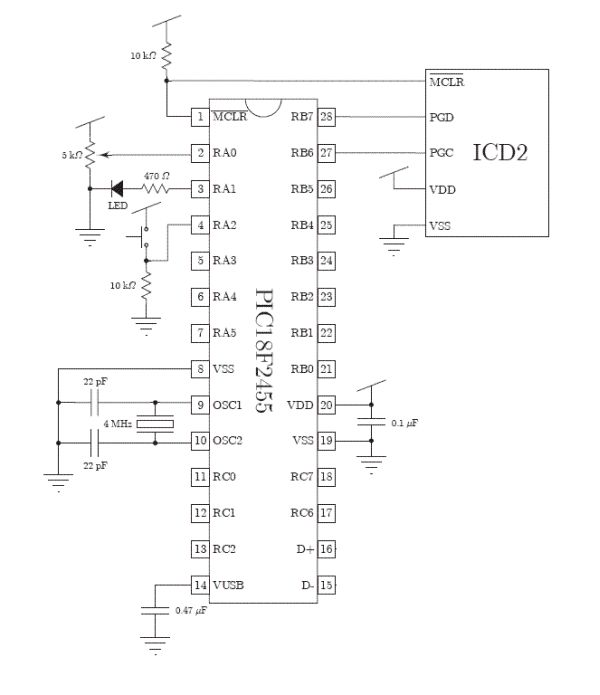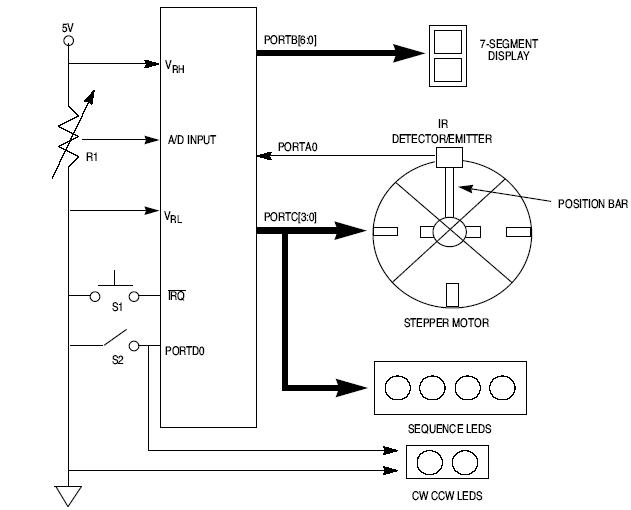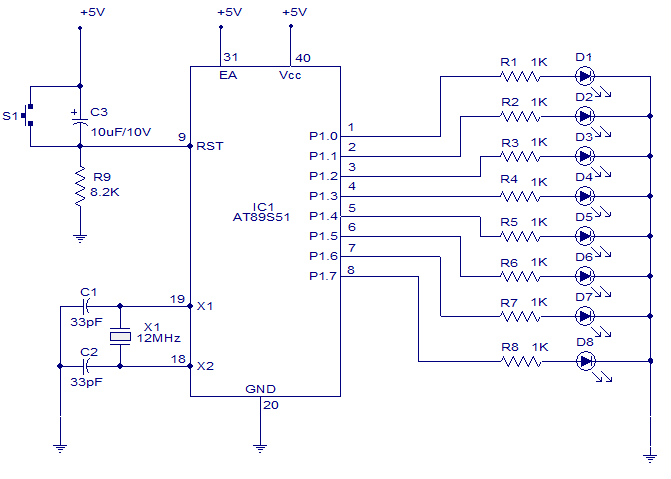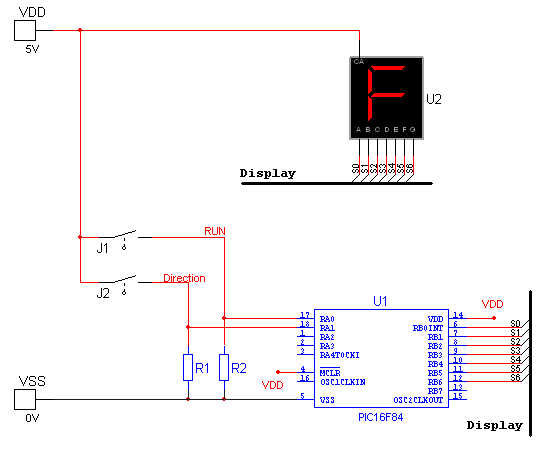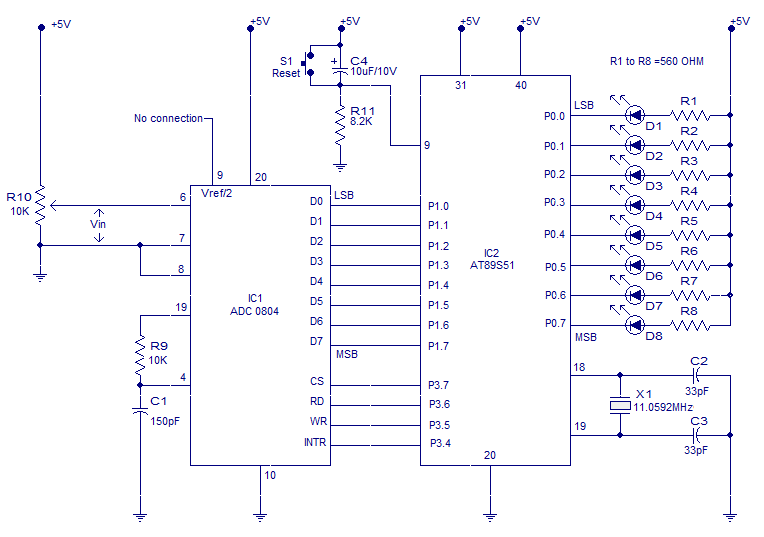
microcontroller 8051 rftx rx
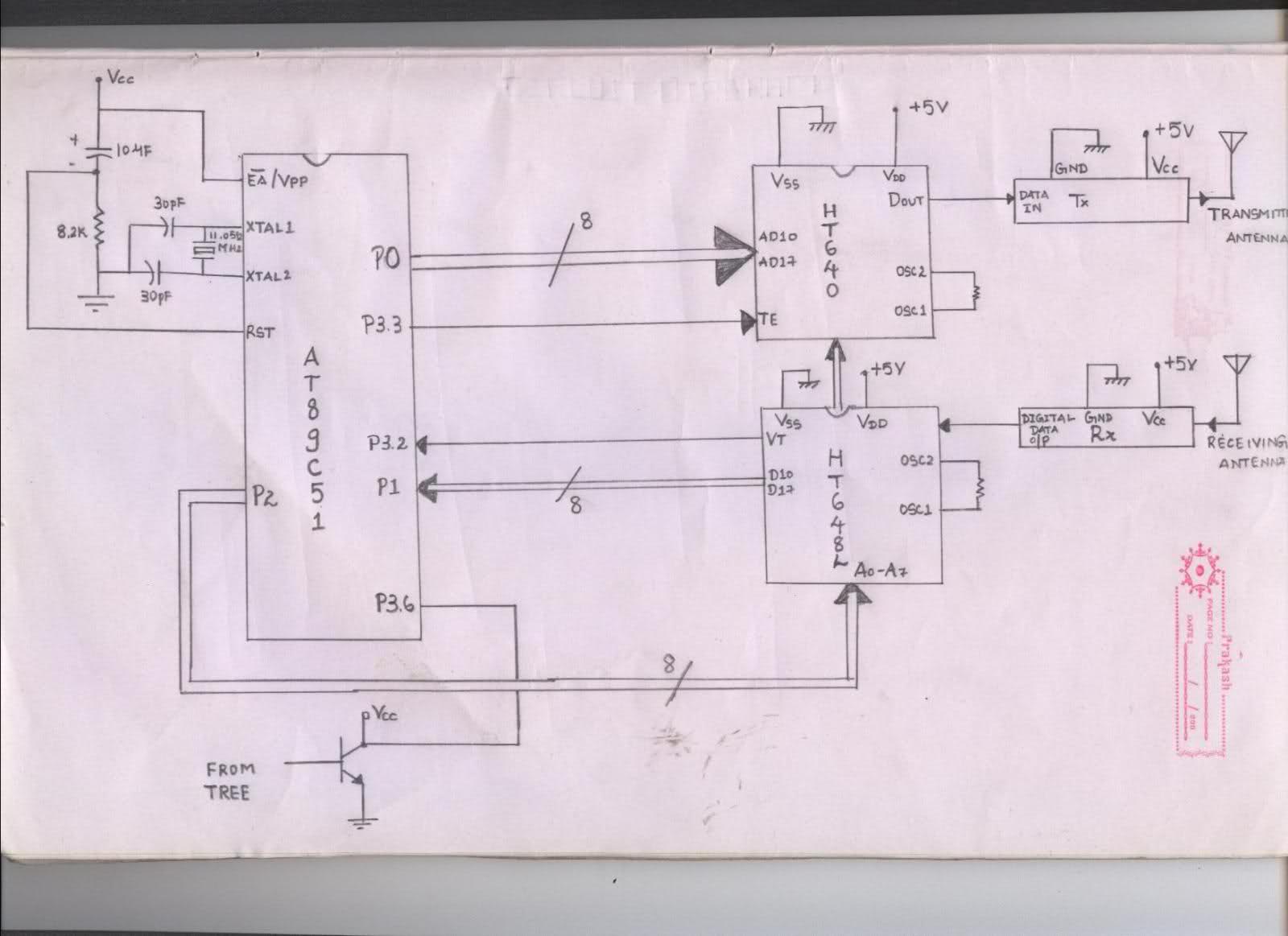
The issue arises when connecting the 8051 microcontroller to the HT640 encoder; the data sent is not received at the receiver. However, when the connections to the 8051 are removed, the transmission functions perfectly. This indicates that manual RF communication works correctly, as the 8-bit data input to the encoder is successfully transmitted and later received at the HT648L decoder. It is crucial to determine if some interfacing is required between the HT640 encoder and the 8051 microcontroller, or if interfacing is necessary on the receiver side between the HT648L decoder and the 8051. Assistance is urgently needed, as these RF modules require data in a serial format, and the encoder IC functions similarly to a shift register. The 8051's UART transmits data serially, while the RF modules typically accept a maximum data rate of 4000 bps. Thus, if the UART is set to 1200 bps, the UART output can be directly connected to the transmitter pin. Similarly, on the receiver side, the output from the receiver can be connected to the RX pin of the 8051.
The described system involves an RF communication setup utilizing an 8051 microcontroller, the HT640 encoder, and the HT648L decoder. The HT640 encoder converts parallel data from the microcontroller into a serial format suitable for RF transmission. The 8051 microcontroller features a Universal Asynchronous Receiver-Transmitter (UART) that facilitates serial communication, which is essential for interfacing with the RF modules.
In this configuration, the 8051 microcontroller sends 8-bit data to the HT640 encoder. The encoder transforms this parallel data into a serial format, which is then transmitted via RF. The HT648L decoder receives this RF signal and converts it back into a parallel format for the microcontroller or any connected device. It is important to ensure that the baud rate of the UART is compatible with the RF module’s specifications. The maximum data rate of the RF module is 4000 bps, and for reliable communication, the UART should be configured to a lower rate, such as 1200 bps, to ensure that the data is transmitted and received without errors.
Additionally, proper interfacing between the components is critical. The HT640 encoder and the 8051 microcontroller must be connected with appropriate signal lines, ensuring that the data lines are correctly configured. Similarly, the output from the HT648L decoder must be connected to the RX pin of the 8051, allowing the received data to be processed correctly. Any discrepancies in the connections or configurations could lead to the issues described, where the data is not received correctly when the 8051 is connected. Therefore, a thorough check of the wiring, signal integrity, and configuration settings is recommended to resolve the communication issues in this RF system.The problem is when i connect the 8051 to the encoder the data send is not received at the receiver but as soon as the 8051 connections are removed the transmisison works perfectly. thus manually the RF communication works perfectly i. e the 8 bit data which i give manually at the encoder is perfectly send and then later received at the decoder sid
e Is some sort of interfacing required b/w encoder-ht640 and microcontroller 8051 or at the receiver side b/w the decoder-ht648l and 8051. help me plz its urgent these RF modules need data in serial form and the encoder IC is more like a shift register here.
8051`s uart sends data serially. RF modules accepts max datarate of 4000bps normally. so if you keep uart at 1200 bps then uart o/p can be directly connected to transmitter pin. similarly on the other side. receiver`s o/p can be connected to rx pin of 8051. 🔗 External reference
The described system involves an RF communication setup utilizing an 8051 microcontroller, the HT640 encoder, and the HT648L decoder. The HT640 encoder converts parallel data from the microcontroller into a serial format suitable for RF transmission. The 8051 microcontroller features a Universal Asynchronous Receiver-Transmitter (UART) that facilitates serial communication, which is essential for interfacing with the RF modules.
In this configuration, the 8051 microcontroller sends 8-bit data to the HT640 encoder. The encoder transforms this parallel data into a serial format, which is then transmitted via RF. The HT648L decoder receives this RF signal and converts it back into a parallel format for the microcontroller or any connected device. It is important to ensure that the baud rate of the UART is compatible with the RF module’s specifications. The maximum data rate of the RF module is 4000 bps, and for reliable communication, the UART should be configured to a lower rate, such as 1200 bps, to ensure that the data is transmitted and received without errors.
Additionally, proper interfacing between the components is critical. The HT640 encoder and the 8051 microcontroller must be connected with appropriate signal lines, ensuring that the data lines are correctly configured. Similarly, the output from the HT648L decoder must be connected to the RX pin of the 8051, allowing the received data to be processed correctly. Any discrepancies in the connections or configurations could lead to the issues described, where the data is not received correctly when the 8051 is connected. Therefore, a thorough check of the wiring, signal integrity, and configuration settings is recommended to resolve the communication issues in this RF system.The problem is when i connect the 8051 to the encoder the data send is not received at the receiver but as soon as the 8051 connections are removed the transmisison works perfectly. thus manually the RF communication works perfectly i. e the 8 bit data which i give manually at the encoder is perfectly send and then later received at the decoder sid
e Is some sort of interfacing required b/w encoder-ht640 and microcontroller 8051 or at the receiver side b/w the decoder-ht648l and 8051. help me plz its urgent these RF modules need data in serial form and the encoder IC is more like a shift register here.
8051`s uart sends data serially. RF modules accepts max datarate of 4000bps normally. so if you keep uart at 1200 bps then uart o/p can be directly connected to transmitter pin. similarly on the other side. receiver`s o/p can be connected to rx pin of 8051. 🔗 External reference
